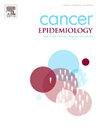匈牙利癌症转变的半个世纪:1970-2020年Lexis图中死亡率动态的可视化和评估
IF 2.3
3区 医学
Q3 ONCOLOGY
引用次数: 0
摘要
匈牙利是欧洲癌症死亡率负担最高的国家之一,因此非常需要使用适当的监测工具来监测人口死亡率的变化。Lexis图表提供了一种方法来描述年龄、时期和队列对长期癌症死亡率趋势的影响。方法基于匈牙利中央统计局的死亡登记表和人类死亡率数据库,构建6个癌症地区的年龄特异性死亡率,然后在假定泊松分布的Lexis图单元格内平滑(p样条)。在计算了死亡率的年百分比变化后,使用热图将结果可视化。结果从20世纪90年代中期开始,在两性中都观察到死亡率的大幅下降,这是一种强烈的时期效应,描绘了匈牙利两个不同的流行病学时期。自2010年以来,70-90岁女性(1930年至1950年之间出生的女性)的乳腺癌死亡率一直在上升。与男性不同,1940年至1950年之间出生的女性在肺癌死亡率方面经历了两次平稳期,这突显了吸烟流行的迟发性。结论:研究结果与在类似发达国家观察到的癌症转移模式一致,强调了扩大有效一级和二级预防措施实施的迫切需要。这包括维持有组织的筛查和反吸烟项目,以及引入低剂量CT肺癌筛查。本文章由计算机程序翻译,如有差异,请以英文原文为准。
Half a century of cancer transition in Hungary: A visualization and assessment of mortality dynamics in the Lexis diagram, 1970–2020
Objectives
Hungary is among the countries with the highest cancer mortality burden in Europe, consequently there is a crucial need to monitor changes in death rates in the population using appropriate surveillance tools. The Lexis diagram provides a means to depict age, period and cohort influences on long-term cancer mortality trends.
Methods
Age-specific mortality rates for six cancer localizations were constructed based on the Deaths Register of the Hungarian Central Statistical Office and the Human Mortality Database, then smoothed (p-splines) within the cells of the Lexis diagram assuming Poisson distribution. After calculating the annual percentage change in mortality rates, the results were visualized using heat maps.
Results
Substantial reduction in mortality was observable from the mid-1990s in both sexes as a strong period effect, depicting two distinct epidemiological eras in Hungary. Since 2010, breast cancer mortality in women among ages 70–90 (those born between 1930 and 1950) has been rising. Women born between 1940 and 50 experienced two plateaus in lung cancer mortality, unlike men, emphasizing the delayed nature of the smoking epidemic.
Conclusions
The results align with cancer transition patterns observed in similarly developed countries and emphasize a critical need to expand the implementation of effective primary and secondary prevention measures. This includes sustaining organized screening and anti-smoking programs, as well as introducing lung cancer screening with low-dose CT.
求助全文
通过发布文献求助,成功后即可免费获取论文全文。
去求助
来源期刊

Cancer Epidemiology
医学-肿瘤学
CiteScore
4.50
自引率
3.80%
发文量
200
审稿时长
39 days
期刊介绍:
Cancer Epidemiology is dedicated to increasing understanding about cancer causes, prevention and control. The scope of the journal embraces all aspects of cancer epidemiology including:
• Descriptive epidemiology
• Studies of risk factors for disease initiation, development and prognosis
• Screening and early detection
• Prevention and control
• Methodological issues
The journal publishes original research articles (full length and short reports), systematic reviews and meta-analyses, editorials, commentaries and letters to the editor commenting on previously published research.
 求助内容:
求助内容: 应助结果提醒方式:
应助结果提醒方式:


